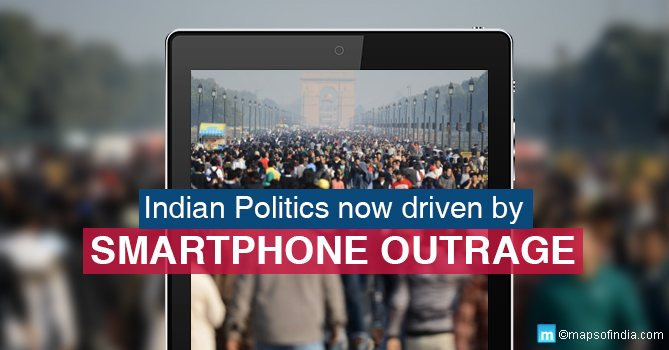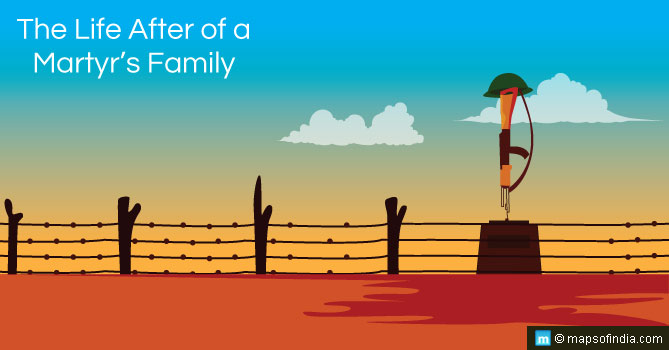Smartphone penetration has been rising rapidly in India and so has usage of social media such as Facebook and Twitter along with message platforms like WhatsApp. But beyond just connecting India they have now emerged as major platforms for expression of public outrage and opinion.
And, this in turn is driving other mediums like print and television, which pick up the public mood and then further the cause on their platforms. The resulting impact is visible. The government has been forced to act or at least show it has acted until the momentum of outrage subsides and is overtaken by the next one.
Governance and politics are now driven by rage and opinion on social platforms but is that a good thing or a better question would be, is that delivering the right impact or results that the people want?
Flashback on public outrage
Anna Hazare Movement for Lokpal
In the social media age in India, the most visible impact of public outrage and opinion was seen during the Anna Hazare movement that came on the back of a call for a Lokpal. The call by social activist Anna Hazare came in the backdrop of several corruption scandals that came to light during the latter part of the UPA II regime.
People had been frustrated watching from the bylines of massive incidents of corruption being reported and their sense of helplessness found new hope in Anna’s movement for a corruption-free government.
People took to social media and the movement got a further boost with television and print media joining in. The result was the UPA II regime was decisively shown the door. But it was not Anna’s movement alone that made the difference. It was smart use of the potential that smartphones offered by Narendra Modi and his party that drove public opinion in their favour. Narendra Modi went to town promising a Lokpal, removing Article 370 which grants special status to J&K, bringing back black money, building Ram temple in Ayodhya and putting Pakistan and China in their place once he took office. The people stamped their approval by voting him in.
Never mind the fact that in the two and a half years since taking office, none of the above mentioned commitments have been fulfilled. But on social media that doesn’t matter. Its ‘Carpe Diem’ or ‘Seize the Day’ for public outpouring of anger that matters. Give people what they want to hear or take some token actions and all is well.
The Nirbhaya case
Remember the massive public outrage to the brutal rape of Nirbhaya that shook the nation’s conscience? The subsequent frenzy of outrage on smartphones and social media? Yes, the rage lasted a while and the culprits were indeed arrested and sentenced to death, but after the government’s initial pro-active response, it’s been all quite since then, as other priorities have taken over for both the government and people. The death sentence is yet to be carried out and the Supreme Court is still debating appeals against the decision.
The betting case and BCCI’s procrastination
South Africa’s cricket captain, Hansie Cronje’s arrest by Delhi Police in the betting case led to massive public outrage over social media against BCCI’s inaction. The public was baying for the then BCCI chief to step down and for BCCI to either reform or shut down.
The issue was then taken up vociferously by television and was centre stage to a lot of public debate and opinion. Beyond making the right noises at the right time, the government basically did little to intervene and simply waited for people’s attention to shift to other issues and it did. It was Supreme Court that was forced to step in and take some action. While the matter is still work in progress, the government has gone back to lying low on the subject since politicians across political lines are involved.
The URI attack in J&K
The brazen attack and subsequent killing of 18 Indian Army soldiers in URI shook the nation and people took to all platforms to express their rage and called for immediate retaliation. Such was the anger that people were forced to take sides; it was either with India or against situation, with all other voices drowned into insignificance.
Seeing the public outrage, the Modi government finally woke up and sanctioned a ‘surgical’ strike across the border. The reason that forced the government to act was public outrage expressed on social media and so, post-retaliation by the Indian Army, the government used the same platforms to go chest thumping across town.
Everyone was happy, the people felt their voice was heard by a pro-active government, the Army had got its retaliation to pacify its own soldiers and the government found an opportunity to make political capital. Once done, the attention moved away and so did the public anger. That is until Nagrota attack happened last week and the nation was once again back to square one, with no one questioning the government’s action or inaction to repeated attacks since Uri.
PM Modi’s demonetization
With the country already divided between pro and anti-Modi camps, it was the 8 November announcement by the PM on demonetization that has taken up public attention and reaction. After the initial hailing of PM’s initiative on smartphone driven social media, the same medium is now increasingly turning anti-government with many questioning the government’s planning or lack of it.
The government’s reactive decisions based on as-it-happens basis is increasingly turning into jokes on WhatsApp. So is the gamble taken by PM Modi going to help in the forthcoming elections in UP, Punjab and later in Gujarat or will it backfire, as it happened under the ‘India Shining’ campaign of the previous NDA stint?
Time for government to take initiative
But that is not the debate here. The concern here is that Indian politics is now being driven by people’s outrage and social media activism rather than government initiative. The government has quickly learnt that if it can ride out the period of public rage, it can shift people’s attention to other issues and simply get away with complete inaction or at best farcical action, as we saw during the surgical strike, which has had little impact on our neighbour, and the half-hearted attempt at appointing the Lokpal, which remains vacant till date.
Public opinion must definitely count in any democracy but poorly planned reactive or farcical response to public outrage by the government must be discouraged. It is time for the government and political parties to rise above petty politics and use social media for the positive potential it offers, for people can’t remain naïve forever and elections remains the best place to discover that.





